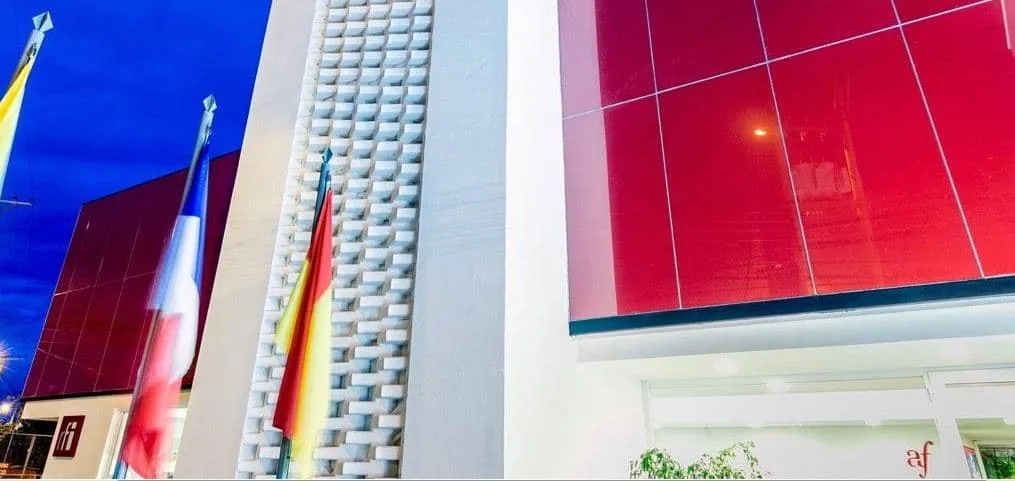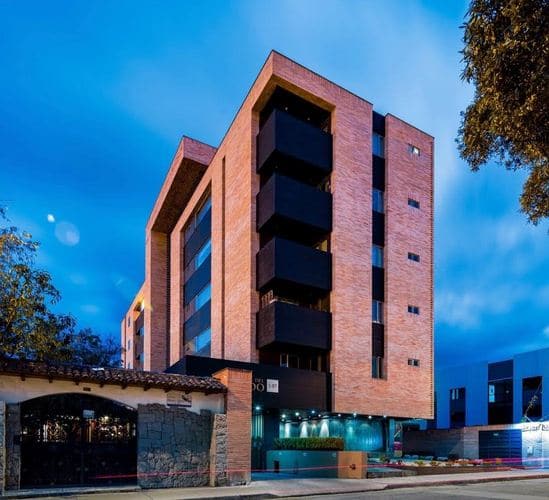Pedro Espinosa: An artchitect for Cuenca’s future
I first became acquainted with Pedro Espinosa’s work as I was coming back from a weekend in the country with some Ecuadorian friends.
We were passing through San Joaquin on our way back to Cuenca when a hillside house caught my eye. I wondered who in Ecuador designed it and when could I meet this designer. A few weeks later, after a little digging, Pedro Espinosa, the architect of the house, graciously invited me to his Bauhaus-style offices in Cuenca, on the top of Padre Aguirre in El Centro, to talk about architecture, about his influences of his work, about the future of building in Cuenca.
Pedro Espinosa, the architect of the house, graciously invited me to his Bauhaus-style offices in Cuenca, on the top of Padre Aguirre in El Centro, to talk about architecture, about his influences of his work, about the future of building in Cuenca.

Pedro Espinosa in his office, explaining to me his next Cuenca building project.
We first talked about what got him into architecture in the first place. Pedro says he knew from a very young age that he wanted to be an architect. “I was always building things as a kid. I used everything I had in hand, including discarded blocks or garbage pieces. I would make buildings out of them,” he says. “So I kept saying: I want to be an architect when I grow up!”
The youngest of five children, from an old Cuencano family, his older brother, Carlos, had studied architecture and it fascinated him. Mies van der Rohe, Frank Lloyd Wright, Le Corbusier, and Louis Kahn became his adolescent heroes.
After graduating from the five-year architectural program at the University of Cuenca, Pedro decided to study an additional two years, specializing in technical construction. He strongly felt that he needed a deeper knowledge of international rules, of the physics of “comfort construction,” and of specific techniques of noise insulation and temperature control, as well as visual and auditive issues specific to larger buildings as well as family homes.
“I realize Cuenca can be quite noisy, especially in or near El Centro, but your home should be an oasis away from pollution and turbulence,” Pedro says.

An urban dwelling on Primero de Mayo.
“The systems of construction I use, whether I utilize metal, wood, or brick, need to be integrated in modern lines.” But he is adamant about the fact his idea of modern is not an international modern. “It’s a Cuenca modern,” he insists. “It’s about respect for your city, respect for the traditions and for your culture,” he states. He combines traditional techniques and materials, and uses all local elements and supplies.
Pedro’s work was recognized in 2012 when he won the “Cuenca Best Building of the Year” for his design of the Alliance Française building. He claims it was one of the most difficult projects he had dealt with. The conditions were particularly harsh: a time-frame of four months and an extremely limited budget. He had to rely on donations and private contributions to get it done. “I was knocking on every door, asking for grants or materials.” The result was a stunning architectural interpretation for a foundation that wants to be known for its modern ideas.

Alliance Française in Cuenca, near El Centro.
We talked about the future of the building boom in Cuenca. Although he’s been offered many opportunities in Quito and Guayaquil, Pedro says Cuenca is one of his loves, and that he’ll always remain here.
“I’m not going anywhere, Cuenca is the perfect size and feeling for me,” he says, laughing. “I want to be an active part of the future of Cuenca as a vibrant and relevant city.” To this effect, he talked about his philosophy of designing Cuenca buildings for living.
He is unrelenting in his determination to break the repetitive, often boring paradigm of current construction in Cuenca. Pedro creates designs that are a result of a dialogue between human living and space. “A building is an organic machine for human living. You need different spaces because people are individuals. It’s about creating a dynamic concept that includes terraces, interior patios, insulating double pane windows, and lots and lots of light.”

Edificio Portal del Ejido Garden apartments on Remigio Tamariz and Solano.
Pedro is confident about the future of architecture and building in Cuenca. “I have a very positive attitude toward the new generation of architects in Cuenca,” he says.
As an Architecture Professor at the University of Azuay, he sees the new talent first hand, and is excited about it. Being professor keeps him current and exposes him to new ideas in architecture. In fact, his office, which employs three other architects, includes his former “best” students. “I had five years to interview them,” he chuckles. He doesn’t want the company to get much bigger, as he is adamant about maintaining quality over quantity. “Our profits might be less than a big building company, but to me, it’s an investment in the city that I grew up in and love.”
Between teaching and wok on his architecture projects, I had to ask him how he manages family time. As with most Ecuadorians, family is, of course, extremely important.
The proud father of three boys ages 9 to 14, he insists on having lunch every day at home with his wife Alejandra and boys. “That’s sacred,” he says. Weekends are also sacred and every two weeks the entire family gets together and performs. “We’re a very musical family, we get together and inevitably, we end up singing and playing music.”

Casa Espinosa
An avid guitar player, he sees the relation between music and architecture. “It’s about rhythm, contrast, and feeling.” When I told him how impressed I was with his own house, he smiled. “It’s kind of an experiment,” he claims. “My oldest brother studied alternative and renewable energies in Canada, so my house is part of an experiment to see how far we can take this. I’d love to see self sufficiency in every house, integrating solar and wind power, with a superior quality of comfort and of living that would be generated by these renewable energies. I have a wind turbine in the back of my house,” he says.
Top picks for this week’s artistic activities:
Monday and Tuesday, December 18 and 19, The Cuenca International Chorale presents its annual Christmas Concert, joined by the Cuenca Symphony Orchestra,under the baton of Maestro Michael Meissner. Free admission, but donations are welcomed and gratefully accepted. At the Old Cathedral on Parque Calderon, 7:30 p.m.
Tuesday, December 19, La Casa de la Cultura Ecuatoriana invites you to the opening ceramicist Fausto Bravo’s opening of his exhibit. At the Museo Manuel Augustin Landivar, Calle Larga 2-23 y Manuel Vega, 7 p.m.. The exhibit runs through January 2018.
See you next week!


















